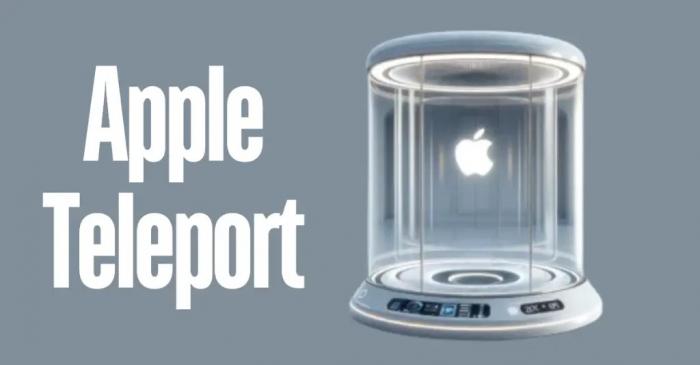Apple Teleport: The Future of Instant Connectivity and Movement

What is Apple Teleport? A New Tech Revolution or Just a Dream?
Apple Teleportthe ever-evolving world of technology, Apple has been a pioneer in reshaping how we interact with devices, the internet, and even each other. But “Apple Teleport” sounds like something straight out of a sci-fi movie. So, what exactly is it?
Well, let’s get one thing clear: Apple Teleport isn’t an officially announced product—yet. It’s more of a concept, a blend of futuristic speculation and innovation culture that surrounds Apple. Imagine if your iPhone, Mac, or even Vision Pro could allow you to instantly transport yourself—or your data—to another location in real-time. This concept touches on everything from augmented reality (AR) to quantum computing and AI-powered logistics.
So, whether it’s an actual teleportation of a person or just the instant movement of digital presence or data, Apple Teleport represents the next level of digital mobility—and it’s not as far-fetched as you might think.
From seamless file transfers to virtual teleportation using immersive tech, Apple is laying the groundwork through its devices and ecosystem. The question is no longer “if”, but “how soon?”
The Technological Building Blocks Behind Apple Teleport
To understand the idea of Apple Teleport, we need to look at the technologies Apple is already developing or could soon integrate. It’s not about magical sci-fi teleportation just yet—it’s about digital teleportation and hyper-fast interaction.
First up, we have AirDrop, Apple’s own version of short-range, wireless data transfer. While basic in concept, AirDrop lays the foundation for what teleportation could mean in a digital sense—instant presence. Now imagine that with spatial computing, like what Apple is doing with Vision Pro, where you’re able to place yourself or your data into another environment in seconds.
Then comes Apple’s ARKit and machine learning frameworks. These are being fine-tuned to interpret space, depth, and human interactions. Combine this with neural engines in Apple Silicon chips and you start to see how virtual teleportation—placing yourself in meetings, experiences, or simulations instantly—could become the norm.
Quantum computing and AI advancements also play a crucial role here. While Apple hasn’t publicly released a quantum computer, they’re undoubtedly watching the space closely. A real teleportation system, even if limited to digital constructs, would need massive computational power—something Apple is slowly achieving with M-series chips.
How Apple Teleport Could Change Everyday Life

Now let’s dream a little. Imagine starting your morning in Lahore and attending a board meeting in London—without ever leaving your room. That’s the promise of Apple Teleport, if we imagine it as real-time immersive virtual presence.
For business, this would mean no more travel hassles. Teams could collaborate inside simulated spaces, moving around digital whiteboards or 3D prototypes. Think Zoom, but completely embodied and spatial—like you’re actually there.
Education would be transformed too. Students could “teleport” into historical events, space missions, or biology labs. Instead of watching videos, they’d live the lesson in full immersion, learning in ways never possible before.
And then there’s entertainment. With Apple Teleport, concerts, movies, and video games would become fully immersive. You wouldn’t just watch a concert—you’d stand beside the guitarist on stage, all from your living room.
But it’s not just about fancy features. Apple Teleport would also mean greater accessibility, helping people with disabilities experience the world in new ways. It could even become a mental health tool—teleporting someone from a stressful environment to a calm digital retreat in seconds.
Privacy, Ethics, and the Teleportation Dilemma
Of course, with any major shift in tech, especially one as massive as teleportation—even digital—comes a wave of ethical concerns.
First off, privacy. If you’re virtually present in another space, who owns your data? Can someone record your virtual “self” without permission? Apple is known for strict privacy protocols, but teleportation would require even tighter data controls and security measures.
Next is identity and consent. Could someone clone your avatar? Could your digital self be manipulated? These questions sound dramatic, but they’re already emerging in AI-generated content, and Apple would have to build serious safeguards into any teleportation tech.
There’s also the mental and physical impact. Humans aren’t used to existing in two places at once, even virtually. The psychological effects of frequent teleportation could include fatigue, disorientation, or even detachment from physical reality. That means Apple would need to invest in well-being features—possibly integrating biofeedback to know when to pull you out of a virtual teleportation session.
Apple Teleport: When Could It Become a Reality?
We’re not saying that Apple Teleport is dropping in the next iOS update, but it’s not entirely fantasy either. Apple has already begun shaping the idea with its current product line. The Vision Pro, AirPods Pro, and Spatial Audio, along with AI integration, are all stepping stones to full digital teleportation.
If we look at how fast Apple moves, we might see an early-stage Apple Teleport experience in the next 5 to 10 years. It will probably begin with ultra-immersive telepresence—think FaceTime combined with AR and 3D scanning—before moving to deeper levels of interaction.
Eventually, with 6G networks, faster chips, and smarter AI, we might be able to fully teleport ourselves into virtual spaces. From there, who knows—maybe physical teleportation isn’t so impossible after all?
Apple might not be able to break the laws of physics just yet, but it’s certainly preparing to bend the limits of digital space and time.
Final Thoughts: Is Apple Teleport the Next Big Thing?
In a world where remote work, digital presence, and global collaboration are more important than ever, Apple Teleport could be the next logical step. It might start small—better calls, better interaction, immersive learning—but it could redefine the very meaning of “being somewhere.”
Apple is known for taking wild ideas and making them real. They don’t just follow tech trends—they create them. So while “Apple Teleport” might sound like a science-fiction dream today, don’t be surprised if it’s tomorrow’s everyday reality.
Keep your eyes open. The future isn’t coming. With Apple Teleport, it might just arrive instantly.
YOU MAY ALSO READ
Apple Teleport



